
Eating a heart-healthy diet is essential for maintaining good health and preventing heart disease. I often look for recipes that not only taste great but also support heart health. In this article, I will share my top ten recipes that are both delicious and beneficial for your heart.
These recipes include a variety of ingredients packed with nutrients that help lower cholesterol and promote heart health. By incorporating these meals into my daily routine, I can enjoy flavorful dishes while taking care of my heart.
1. Quinoa and Black Bean Salad

Quinoa is a grain that is high in protein and fiber. Black beans are also nutritious and can help support heart health. Together, they make a tasty salad.
Making this salad is easy. I usually spend about 20 minutes preparing it. Here’s how I do it:
- Rinse 1 cup of quinoa under cold water.
- Cook quinoa in 2 cups of water. Bring it to a boil, then simmer for 15 minutes.
- In a bowl, mix the cooked quinoa with 1 can of rinsed black beans.
- Chop 1 red bell pepper and 1 small red onion. Add them to the bowl.
- Squeeze juice from 1 lime over the mixture.
- Add salt, pepper, and any herbs I like, such as cilantro or parsley.
- Toss everything together, and it’s ready to serve.
This salad can be enjoyed right away or chilled for later. It’s a filling and healthy option for lunch or dinner.
2. Avocado and Tomato Toast
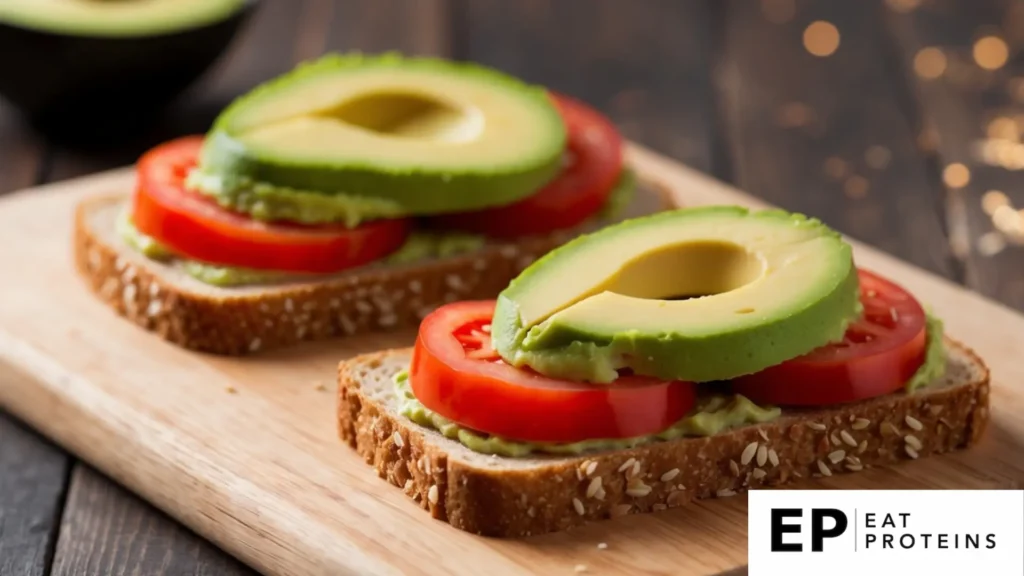
Avocado and tomato toast is a simple, heart-healthy dish. It combines creamy avocado and fresh tomatoes on whole-grain bread. This meal is rich in healthy fats, fiber, and vitamins.
To make this toast, I find it very easy. First, gather the ingredients: ripe avocado, fresh tomatoes, whole-grain bread, salt, and pepper. I also like to add a sprinkle of garlic powder or fresh herbs for extra flavor.
Here are the steps to prepare it:
- Toast 1-2 slices of whole-grain bread until golden brown.
- While the bread is toasting, cut the avocado in half, remove the pit, and scoop the flesh into a bowl.
- Mash the avocado with a fork and add a pinch of salt and pepper.
- Slice fresh tomatoes while the bread cools slightly.
- Spread the mashed avocado onto the toasted bread.
- Top with slices of tomato and add more seasoning if desired.
This recipe is not only quick to prepare but also nutritious. It is perfect for breakfast or a light snack.
3. Grilled Salmon with Lemon

Grilled salmon with lemon is a simple and healthy dish that I enjoy making often. Salmon is a great source of omega-3 fatty acids, which are good for heart health.
To make this dish, I gather the following ingredients: fresh salmon fillets, olive oil, lemon juice, salt, and pepper. The preparation time is quick, taking about 10 minutes.
Here are the steps I follow:
- Preheat the grill to medium-low heat.
- Brush both sides of the salmon fillets with olive oil.
- Squeeze fresh lemon juice over the salmon and season with salt and pepper.
- Place the salmon on the grill and cook for about 6-8 minutes on each side, or until the flesh flakes easily with a fork.
I often serve this dish with a side of steamed vegetables or a fresh salad. The bright flavor of the lemon enhances the rich taste of the salmon, making it a satisfying and heart-healthy option.
4. Oatmeal with Berries
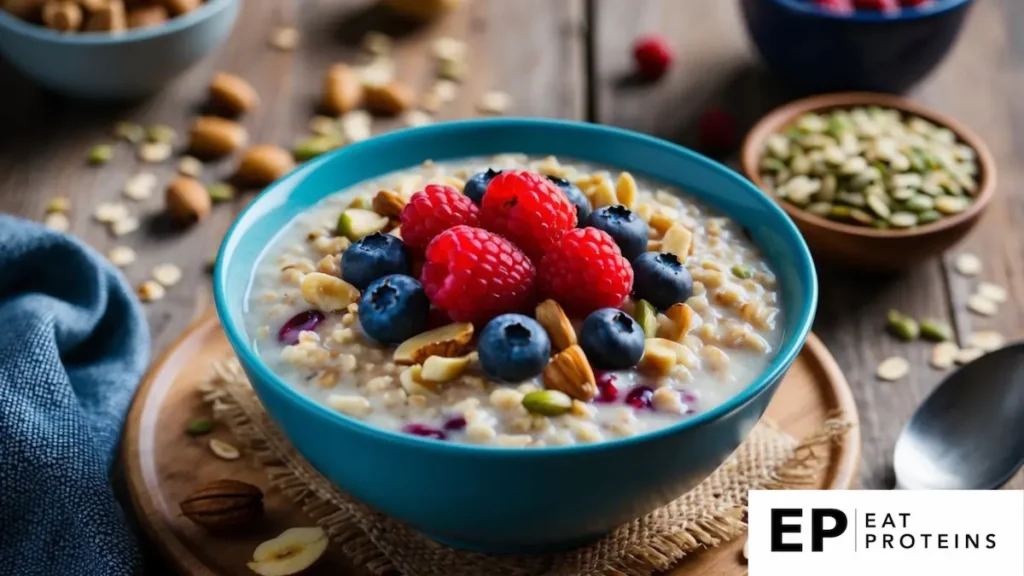
Oatmeal with berries is a nutritious and delicious option for a heart-healthy meal. Oatmeal is high in fiber and can help lower cholesterol levels. Berries bring antioxidants and vitamins that support heart health.
I find this recipe easy to prepare. In just a few steps, I can enjoy a wholesome breakfast.
- Start by measuring 1 cup of rolled oats and 2 cups of water or milk.
- Bring the water or milk to a boil in a pot.
- Add the oats and reduce the heat. Let it simmer for about 5 minutes.
- Stir occasionally until the oats reach my desired consistency.
- Once the oatmeal is cooked, I add a handful of fresh berries like blueberries, strawberries, or raspberries.
I also enjoy sweetening it with a drizzle of honey or a sprinkle of cinnamon. This combination not only tastes great but also provides essential nutrients that benefit my heart health.
5. Kale and Chickpea Salad
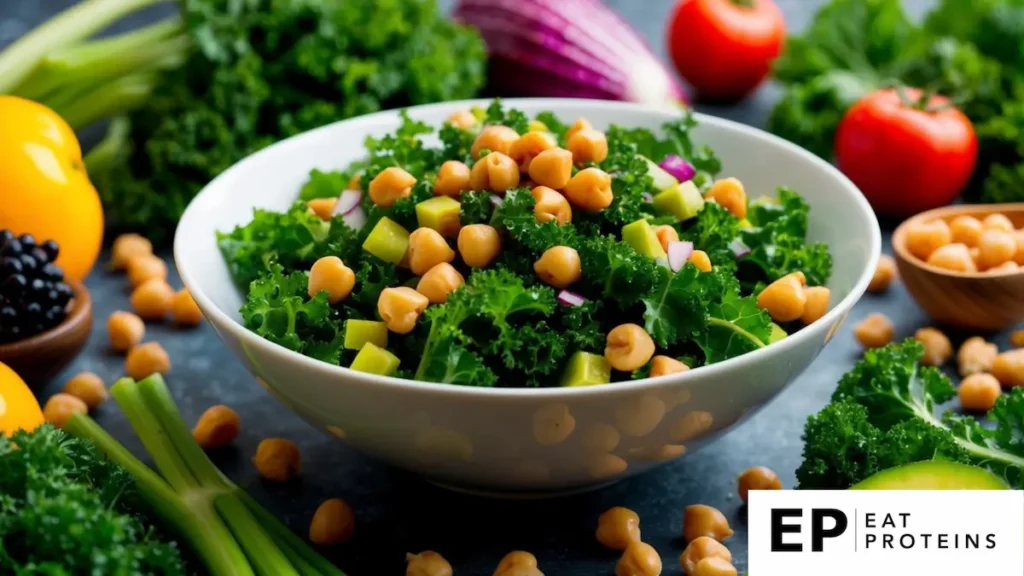
Kale and chickpea salad is a nutritious and tasty choice for heart health. Kale is a leafy green rich in vitamins, while chickpeas add protein and fiber. This combination makes a filling meal or side dish.
Making this salad is simple. First, I wash and chop about 2 cups of kale and place it in a large bowl. I squeeze half a lemon over the kale to enhance the flavor and help soften it.
Next, I rinse and drain a can of chickpeas. I add them to the kale along with 1 diced avocado, half a chopped red onion, and a cup of cherry tomatoes, halved.
For the dressing, I mix 3 tablespoons of olive oil, salt, and pepper to taste. I pour this mixture over the salad and toss everything together.
This salad is quick, taking around 15 minutes to prepare. It’s not only healthy but also delicious and satisfying.
6. Greek Yogurt with Honey
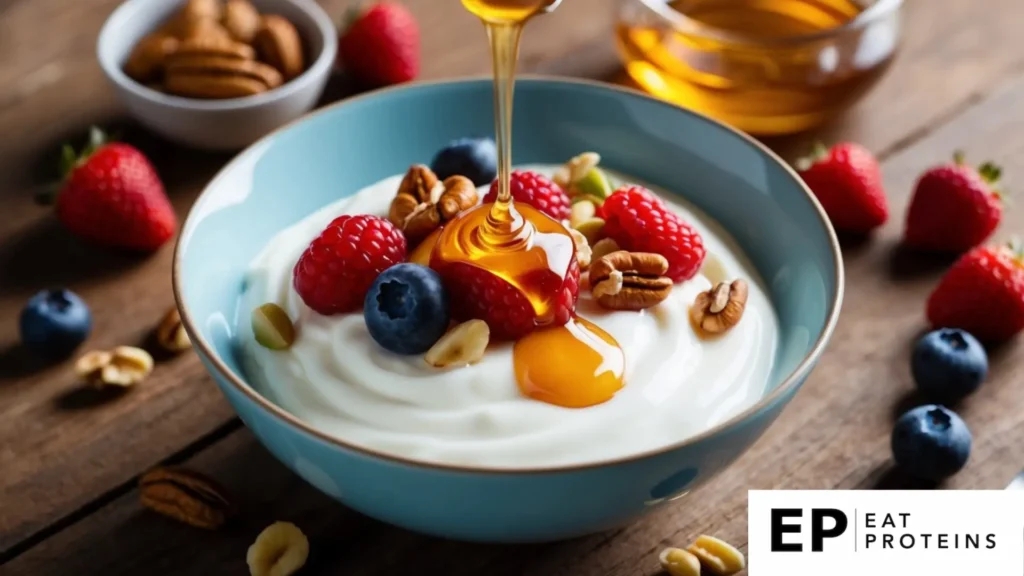
Greek yogurt is a thick, creamy yogurt that is higher in protein than regular yogurt. It has a tangy taste that pairs well with many toppings. I enjoy Greek yogurt with honey for a simple, heart-healthy snack.
Making this dish is quick and easy. Here’s how I prepare it:
- Choose plain Greek yogurt. I like to use non-fat or low-fat for a healthier option.
- Measure out one cup of Greek yogurt and put it in a bowl.
- Drizzle about one to two tablespoons of honey on top. Adjust the amount based on your taste.
- For added flavor, I often sprinkle some fresh fruit, like berries, or a handful of nuts on top.
This dish provides a mix of protein, healthy fats, and natural sweetness. It’s perfect for breakfast, a snack, or even dessert. Plus, it supports heart health by offering beneficial nutrients.
7. Baked Sweet Potato Fries
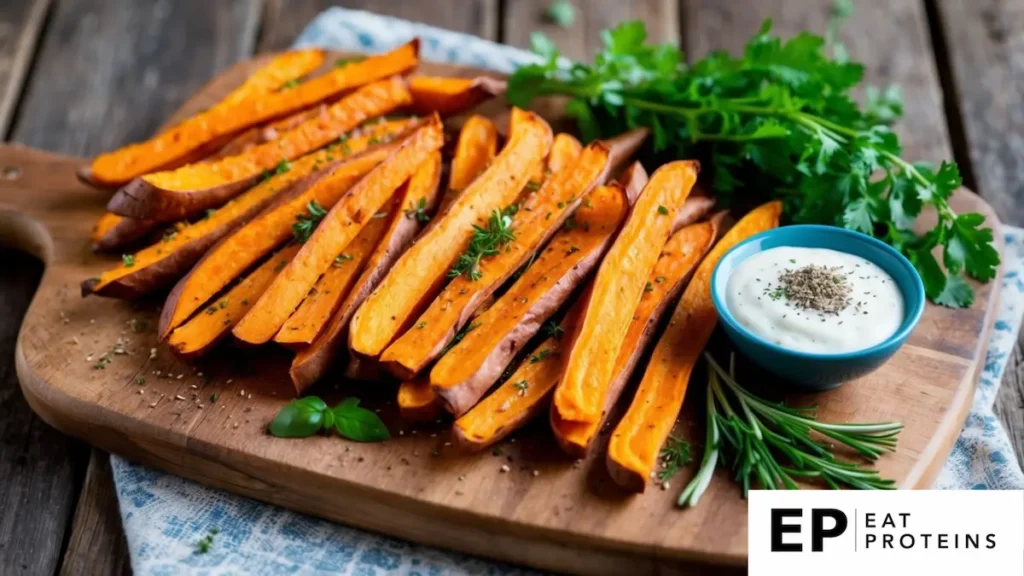
Baked sweet potato fries are a delicious and nutritious alternative to regular fries. They are rich in vitamins and fiber, making them a great choice for a heart-healthy diet.
I find making sweet potato fries quite easy. You only need a few ingredients: sweet potatoes, olive oil, salt, and your choice of spices.
Here are the steps I follow:
- Preheat the oven to 425°F (220°C).
- Wash and peel 2 medium sweet potatoes.
- Cut them into thin strips, about 1/4 inch thick.
- In a bowl, toss the sweet potato strips with 1 tablespoon of olive oil and a pinch of salt.
- Spread the fries in a single layer on a baking sheet lined with parchment paper.
- Bake for 20 to 25 minutes, flipping halfway through, until they are golden and crispy.
These baked sweet potato fries pair well with various dips and make a perfect snack or side dish. Enjoy!
8. Tuna Salad Lettuce Wraps

Tuna salad lettuce wraps are a fresh and healthy option. They use lettuce leaves as a low-carb alternative to bread or wraps. This dish is perfect for a light lunch or snack.
Making tuna salad is quite simple. I usually start with canned tuna, which is easy to find. I mix it with a few ingredients for flavor, such as Greek yogurt, mustard, diced celery, and salt.
Here are the steps I follow:
- Open and drain one can of tuna.
- In a bowl, combine the tuna with 2 tablespoons of Greek yogurt and 1 teaspoon of mustard.
- Add 1/4 cup of diced celery and a pinch of salt to taste.
- Mix everything until well combined.
Next, I prepare the lettuce. I like to use large leaves from romaine or butter lettuce.
- Carefully wash and dry 4 to 6 lettuce leaves.
- Spoon a generous amount of the tuna mixture into each leaf.
Finally, I enjoy my tuna salad wraps right away. They are tasty, satisfying, and good for my heart.
9. Mediterranean Chickpea Stew
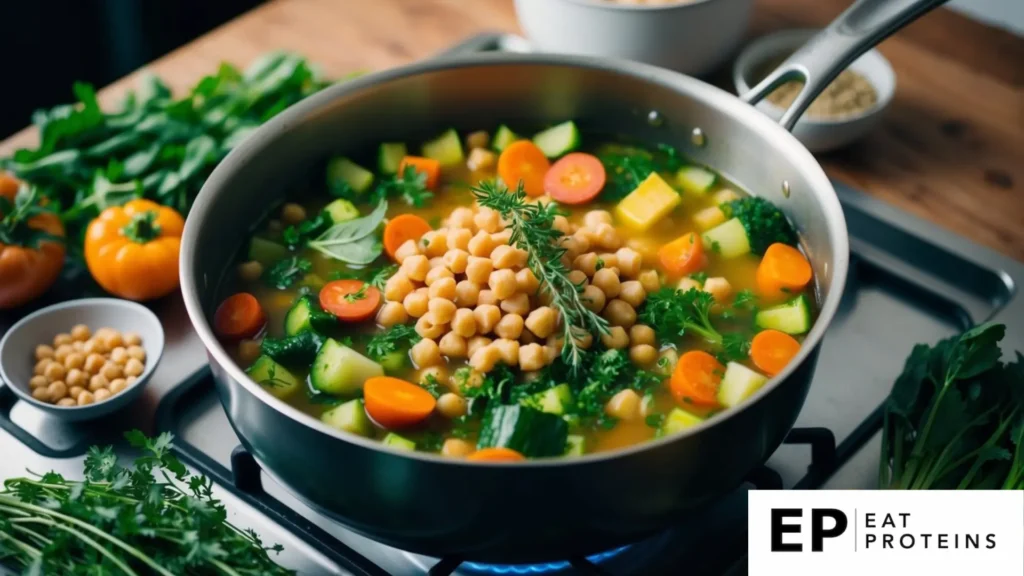
Mediterranean Chickpea Stew is a hearty and nutritious dish. It combines chickpeas with vegetables and spices for a rich flavor. Chickpeas are a great source of protein and fiber, making this recipe heart-healthy.
I appreciate how easy it is to prepare. In about 30 minutes, I can have a warm, satisfying meal ready. Here are the basic steps:
- Sauté Aromatics: In a large pot, heat olive oil and sauté chopped onions, garlic, and bell peppers for about 5 minutes.
- Add Spices: Stir in spices like cumin, paprika, and salt. Cook for another minute until fragrant.
- Add Chickpeas and Vegetables: To the pot, add canned chickpeas, diced tomatoes, and any vegetables I prefer, such as zucchini or spinach.
- Simmer: Pour in vegetable broth and bring to a boil. Reduce heat and let it simmer for 15-20 minutes.
- Serve: Taste and adjust seasoning if needed. I like to serve it with a splash of lemon juice and fresh herbs.
This stew is not only delicious but also versatile. I can adapt it to my taste by adding different vegetables or spices.
10. Spinach and Berry Smoothie

I enjoy making a spinach and berry smoothie because it is both healthy and delicious. This smoothie is rich in vitamins and antioxidants, making it a great choice for heart health.
To prepare this smoothie, I start by gathering simple ingredients: fresh baby spinach, mixed berries, a banana, almond milk, and a spoonful of honey.
Making the smoothie is easy. Here are the steps I follow:
- I wash 1 cup of baby spinach and add it to my blender.
- Next, I add 1 cup of mixed berries, such as strawberries and blueberries.
- Then, I slice 1 banana and add it to the mix.
- I pour in 1 cup of almond milk for a smooth texture.
- Finally, I add 1 tablespoon of honey for sweetness.
I blend everything on high until it’s creamy. This smoothie is not only quick to make, but it also tastes great and keeps me full. Enjoy it right away for the best flavor and nutrients.
What Are the Fundamentals of a Heart-Healthy Diet?

A heart-healthy diet focuses on nourishing the heart by including a variety of nutrient-rich foods. I emphasize the importance of what we eat and the role of different nutrients in maintaining heart health.
What Is a Heart-Healthy Diet?
A heart-healthy diet includes foods that help lower the risk of heart disease. It emphasizes fruits, vegetables, whole grains, lean proteins, and healthy fats. These foods provide essential nutrients like fiber, vitamins, and minerals.
I aim to limit saturated fats, trans fats, sodium, and added sugars. Foods high in these elements can raise cholesterol levels and blood pressure. My diet often includes:
- Fruits and Vegetables: Rich in antioxidants and fiber.
- Whole Grains: Sources of energy and heart-healthy fiber.
- Lean Proteins: Like fish, chicken, and legumes, which support muscle and heart health.
- Healthy Fats: Found in nuts, seeds, and olive oil, these can lower bad cholesterol.
What Is the Importance of Nutrient Variety in a Heart-Healthy Diet?
Incorporating a variety of foods in my diet is crucial for optimal heart health. Different foods provide different nutrients that support my overall well-being. For instance, omega-3 fatty acids from fish help reduce inflammation, while potassium-rich foods can help manage blood pressure.
Eating a colorful plate with many fruits and vegetables ensures a mix of antioxidants, which can protect my heart. I try to focus on seasonal and local produce to maximize freshness and taste. Some nutrient-dense options include:
- Berries: High in fiber and antioxidants.
- Leafy Greens: Such as spinach and kale that are rich in vitamins C and K.
- Nuts and Seeds: Providing healthy fats and protein.
By ensuring variety, I not only make my meals exciting but also promote better heart health.
How to Cook Heart-Healthy Diet Meals?
I focus on two main areas when preparing heart-healthy meals: choosing the right ingredients and using techniques that reduce saturated fat. These choices can significantly impact heart health and overall well-being.
How to Choose the Right Ingredients for a Heart-Healthy Diet?
Selecting heart-healthy ingredients is essential. I prioritize fruits and vegetables, which are high in vitamins, minerals, and fiber. Dark leafy greens, berries, and citrus fruits are excellent options.
Whole grains like brown rice, quinoa, and whole wheat pasta should replace refined grains. They provide more nutrients and fiber, promoting heart health.
I also opt for lean proteins such as chicken, turkey, and fish, especially fatty fish like salmon, rich in omega-3 fatty acids.
When it comes to fats, I choose healthy fats from sources like avocados, nuts, and olive oil. These options improve cholesterol levels and support heart health.
What Are Techniques for Reducing Saturated Fat in a Heart-Healthy Diet?
I use specific cooking techniques to cut saturated fat. One effective method is grilling or baking instead of frying foods. This reduces oil usage, which cuts fat and calories.
I also utilize seasoning to enhance flavors instead of relying on heavy sauces. Fresh herbs, spices, and citrus juice add zest without extra fat.
When cooking meats, I trim visible fat and choose low-fat dairy products. These small changes help lower overall saturated fat intake.
Lastly, I practice portion control. Serving smaller portions of items high in saturated fat can help maintain a balanced diet without sacrificing flavor.
What Are the Benefits of Following a Heart-Healthy Diet?
A heart-healthy diet offers many advantages that can significantly improve overall heart health. It can help lower blood pressure and reduce cholesterol levels. These benefits contribute to a lower risk of heart disease and other related conditions.
How Does a Heart-Healthy Diet Lower Blood Pressure?
Following a heart-healthy diet can help lower blood pressure, which is crucial for heart health. I focus on foods that are low in sodium. Reducing sodium intake is linked to decreased blood pressure levels.
I also include plenty of fruits and vegetables, as they are high in potassium. Foods like bananas and spinach support healthy blood pressure.
In addition, whole grains, such as oats and brown rice, provide fiber. Fiber is beneficial for maintaining a healthy weight, which is important for controlling blood pressure.
How Does a Heart-Healthy Diet Reduce Cholesterol Levels?
A heart-healthy diet is effective in reducing cholesterol levels. I prioritize foods that are high in soluble fiber, such as oats, beans, and apples. These foods help lower bad LDL cholesterol.
I also opt for healthy fats from sources like avocados and nuts. These can replace saturated fats found in butter and fatty meats, further aiding in cholesterol management.
Incorporating fish rich in omega-3 fatty acids, like salmon and mackerel, is another important strategy. Omega-3s can help improve cholesterol levels and reduce inflammation in the heart.
By making these choices, I can actively manage my cholesterol levels and promote better heart health.
